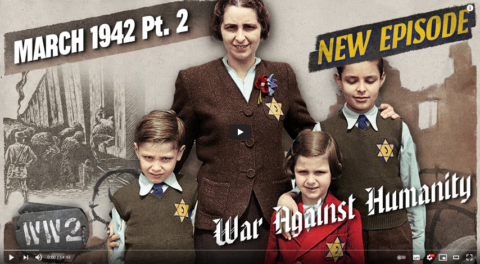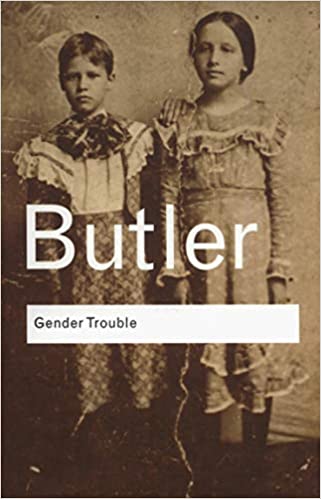World War Two
Published 25 Mar 2021A report on the effect of strategic bombing called the “Dehousing Paper” is spread to justify the targeting of the civilian population of Germany. In Poland, one by one, extermination camps are starting construction. This month, a new one is finished, named Belzec. Here, Jews and other minority undesirables from Poland are gassed.
Join us on Patreon: https://www.patreon.com/TimeGhostHistory
Or join The TimeGhost Army directly at: https://timeghost.tvFollow WW2 day by day on Instagram @ww2_day_by_day – https://www.instagram.com/ww2_day_by_day
Between 2 Wars: https://www.youtube.com/playlist?list…
Source list: http://bit.ly/WW2sourcesHosted by: Spartacus Olsson
Written by: Spartacus Olsson and Joram Appel
Director: Astrid Deinhard
Producers: Astrid Deinhard and Spartacus Olsson
Executive Producers: Astrid Deinhard, Indy Neidell, Spartacus Olsson, Bodo Rittenauer
Creative Producer: Maria Kyhle
Post-Production Director: Wieke Kapteijns
Research by: Joram Appel
Edited by: Miki Cackowski
Sound design: Marek Kamiński
Map animations: Miki Cackowski, Eastory (https://www.youtube.com/c/eastory)Colorizations by:
Mikołaj Uchman
Daniel Weiss
Dememorabilia – https://www.instagram.com/dememorabilia/
Julius Jääskeläinen – https://www.facebook.com/JJcolorization/Sources:
Yad Vashem 1935/15, 3016/2, 1137/217, 10094/1, A4613/1116, 3518/7,1554/1
IWM ART 15747 12, HU 56848, MH 24747, CL 2377, ME(RAF) 3703, HU 107752, C 2364, C 4748, C 4743, HU 74904
Bundesarchiv
Graphic of Vickers Wellington bomber, courtesy of Emoscopes https://commons.wikimedia.org/wiki/Fi…
Graphic of Short Stirling bomber, courtesy of Emoscopes https://commons.wikimedia.org/wiki/Fi…
www.auschwitz.org
www.deathcamps.org
USHMM
Picture of scratches on a wall of a gas chamber at Auschwitz, courtesy of Lasy https://commons.wikimedia.org/wiki/Fi…
from the Noun Project: Watchtower by EliriconSoundtracks from the Epidemic Sound:
Johan Hynynen – “Dark Beginning”
Wendel Scherer – “Growing Doubt”
Peter Sandberg – “Document This 1”
Jon Bjork – “Disposal”
Philip Ayers – “Trapped in a Maze”
Fabien Tell – “Never Forget”Archive by Screenocean/Reuters https://www.screenocean.com.
A TimeGhost chronological documentary produced by OnLion Entertainment GmbH.
From the comments:
World War Two
2 days agoOn the horrors of crafting this, on age restriction, and on covering Allied war crimes – by Spartacus
All episodes of War Against Humanity are difficult to make, but this was an especially harrowing episode to host. When I wrote the conclusion based on Joram’s initial draft, I was composed — it was an intellectual exercise still. That changed once I started giving the words a voice, and as you can see at the end of the episode I had difficulties keeping my composure — when I was done I cried bitterly. But that is how it is supposed to be — the totality of our creation is what brings it home, together with Joram I compile the knowledge, Miki or Karo put it into images under Wieke’s direction, and within all of that it is my job to express it in spoken language as best as I can.
Yes, it is difficult to make and it is difficult to watch — but we sincerely believe that none of us should look away lest we forget. We take upon ourselves to spend hours every week to sift through the minutiae of these events so that we can compress it into 15 minutes every two weeks. We do it not for money, not for fame, and not out of pleasure, but because it needs to be done so that others can spend less time on it than us and still see this time for what it was. It needs to be done by neither glossing over any events, nor the images as horrible as they are. This has two important purposes:
1. driving home that this really happened and
2. defeating any claims towards that we’re just making this up, or exaggerating.
Within that responsibility it is also our duty to report, without prejudice, on what the Allies did that was against human values and rights in this war. We don’t do that because there is an equivalence between events, or to create such an equivalence — we do it for the exact opposite purpose — to show the complete picture and preempt any calls for “what about the bombing of Germany and Hiroshima!?” We do it because we are dedicated to the facts, and the events must be permitted to speak for themselves.We’re doing all of this in a time when the horrors of WW2 are ever further away in the rearview mirror, when survey after survey shows that the younger generation have little or no knowledge of how earth-shattering this war was. An indication of a growing educational gap, and in many of the countries where you are watching it has long been decided that reporting on these atrocities is of especial importance. That includes decisions to also expose younger people to the reality of it despite the graphic nature of the content. In most places these images are purposefully excepted from age restrictions that befall content made for entertainment, that is to say they do not fall under an 18+ restriction. They are regulated as PG 16 or the equivalent, in some places even PG13.
It then troubles us deeply that YouTube chooses to go against the decisions made by democratically elected bodies and restrict this content to over 18 only. It troubles us even more when this leads to the inevitable result that our viewership has dropped by 50% since they started doing that. That is a drop far above the share of our viewers that are under age, because with the restriction comes a reduction in recommendation to view — users that are not logged in and age verified don’t get notified — the content can no longer be embedded on external sites — in some countries it is blocked entirely, regardless of your age — and all of that further decreases the value of the video in YouTube’s algorithms. The result is that the War Against Humanity videos are now an echo chamber where we only reach those that already know the content.
We have spoken to YouTube to remedy this fault, but we have had no success thus far. As a result we have decided to start making a censored version of the videos that we will upload if or when they get age restricted. We already upload all of our content to https://odysee.com/@WorldWarTwo:6 but that is not a place where anyone will find our content by chance. On that note we should point out that the videos only get age-restricted because they are reported to YouTube by the community as inappropriate, offensive, or false. We take umbrage at that, because in effect this means that YouTube is helping those who would like these events to be forgotten, or even deny that they ever happened. It’s a pity; even morally wrong in my viewpoint. It leaves me despondent and the last weeks have been extraordinarily difficult for me — I have questioned my purposes and wondered why I put myself and our team through all of this, if all we’re doing is preaching to the choir. At first it left me sad, but after YouTube’s glib, bureaucratic responses I got depressed. I considered throwing in the towel, but then I would be nothing else than a coward refusing to stand for those who no longer have a voice. So, I will continue, I will resist, and we will fight against anyone that tries to silence us and the dead — because we must not look away, we must never forget.
Spartacus
It is only because of the TimeGhost Army that we can go forward in this battle — join us at https://www.patreon.com/TimeGhostHistory or at Timeghost.tv







